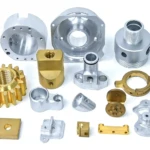Introduction to Additive Manufacturing in Healthcare
Additive manufacturing, also known as 3D printing, has revolutionized various industries, including healthcare. The technology has been increasingly adopted in medical applications, such as the creation of personalized implants, surgical instruments, and anatomical models. A recent breakthrough in this field is the successful production of the world’s first 3D printed implant in accordance with the Medical Devices Regulation (MDR) by 3D Systems, a leading manufacturer of 3D printers.
Background on 3D Systems and Additive Manufacturing
3D Systems was founded over 35 years ago and is credited with inventing 3D printing technology. The company offers end-to-end solutions for high-value areas, including medicine, dentistry, aerospace, defense, and industrial manufacturing. With certified installations in Colorado and Belgium, 3D Systems has supported over 150,000 patient-specific cases, producing more than 2 million implants and surgical instruments.
Point-of-Care Manufacturing with Ext 220 Med
The facial implant was printed using the Evonik 3DF i4 3DF material on the 3D Systems Med Ext 220 printer in a hospital setting. This technology enables clinical teams to design, manufacture, and implement personalized devices that are entirely consistent with a patient’s anatomy. The Ext 220 Med has been used in over 80 skull implants in several hospitals since its launch in August 2023. This solution combines 3D extrusion print technology with a constantly expanding medical application, bringing the production of personalized implants closer to the point of care.
Clinical Innovation and Market Growth
For over a decade, 3D Systems’ surgical planning technology has helped clinicians plan complex surgeries using digital workflows and a wide range of materials. This clinical integration combines engineers, surgeons, and manufacturing, offering significant advantages over traditional out-of-site production methods. The approach reduces treatment delays, improves precision, and reduces costs. The 3D printed maxillofacial implant market has exceeded $2 billion in 2024 and is expected to reach $4 billion by 2034, driving demand for personalized medical solutions.
Transformation of Hospital Manufacturing
Additive manufacturing at the point of care, or the direct production of medical equipment in a clinical environment, is transforming the way patient care is provided. This approach reduces dependence on external suppliers, shortens lead times, and enables truly personalized treatments. A notable example is the collaboration between 3D Systems and University Hospital Basel, which supported the production of the first 3D printed skull implants made on-site according to current MDR standards. This breakthrough has paved the way for the recent milestone of the facial implant, highlighting the feasibility of integrating 3D printing into hospital infrastructure.
Point-of-Care Manufacturing Initiatives
Elsewhere, initiatives like the Ricoh 3D Health Care Innovation Studio at Atrium Health Wake Forest Baptist are enabling clinicians to design and produce FDA-approved anatomical models directly. Localized production allows hospitals to take more control over surgical planning and execution, improving efficiency and outcomes. As interest in point-of-care manufacturing grows, these initiatives mark a broader shift in healthcare systems towards patient-centric workflows.
Conclusion
The successful production of the world’s first 3D printed implant in accordance with MDR marks a significant milestone in the adoption of additive manufacturing in healthcare. As the technology continues to evolve, we can expect to see increased demand for personalized medical solutions, driving growth in the 3D printed maxillofacial implant market. The transformation of hospital manufacturing through point-of-care production is poised to revolutionize the way patient care is provided, enabling truly personalized treatments and improving outcomes.
Future Directions
As the healthcare industry continues to adopt additive manufacturing, we can expect to see further innovations in areas such as:
- Personalized medicine: Additive manufacturing will play a key role in creating customized implants, prosthetics, and surgical instruments tailored to individual patients’ needs.
- Point-of-care manufacturing: The integration of 3D printing into hospital infrastructure will enable clinicians to produce medical equipment and implants on-site, reducing lead times and improving patient outcomes.
- Regulatory frameworks: The development of regulatory frameworks, such as MDR, will ensure the safe and effective use of additive manufacturing in healthcare applications.
Key Benefits
The adoption of additive manufacturing in healthcare offers numerous benefits, including:
- Improved patient outcomes: Personalized implants and surgical instruments can lead to better treatment results and reduced complications.
- Increased efficiency: Point-of-care manufacturing reduces dependence on external suppliers, shortening lead times and enabling truly personalized treatments.
- Cost savings: Additive manufacturing can reduce costs associated with traditional production methods, enabling healthcare providers to allocate resources more effectively.
Challenges and Limitations
While additive manufacturing holds tremendous promise for healthcare, there are challenges and limitations to be addressed, including:
- Regulatory compliance: Ensuring compliance with regulatory frameworks, such as MDR, is crucial for the safe and effective use of additive manufacturing in healthcare applications.
- Standardization: Standardization of additive manufacturing technologies and processes is necessary to ensure consistency and quality of medical equipment and implants.
- Clinical validation: Further clinical validation is needed to demonstrate the safety and efficacy of additive manufacturing in various healthcare applications.
















